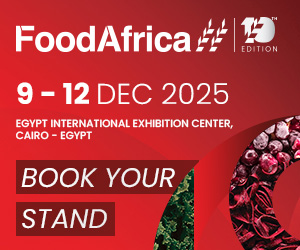The Africa food ingredients market, valued at USD 1.97 billion in 2024, is projected to reach USD 2.07 billion in 2025 and surge to USD 3.03 billion by 2033, expanding at a CAGR of 4.86%.
Food ingredients—ranging from proteins, carbohydrates, fats, vitamins, preservatives, and flavorings to functional additives—play a vital role in enhancing the nutritional value, shelf life, and sensory appeal of food and beverages. In Africa, this sector is being reshaped by the continent’s vast agricultural biodiversity, shifting dietary habits, and growing demand for processed, fortified, and clean-label foods. Rising urbanization and greater health awareness are accelerating consumer interest in organic and nutrient-enriched products, while the African Union’s Agri-Transformation Agenda is pushing for local processing and value addition.
Market Drivers
Urbanization and convenience: Africa’s urban population, growing at 3.4% annually, is fueling demand for packaged, ready-to-eat foods that depend heavily on emulsifiers, stabilizers, and nutrient premixes.
Nutrition fortification programs: With more than 40% of children under five suffering from anemia in sub-Saharan Africa, mandatory fortification of wheat flour, maize meal, oils, and salt has institutionalized demand for micronutrient premixes in 28 countries.
Market Restraints
Dependence on imports: Most specialty and functional ingredients such as hydrocolloids, enzymes, and encapsulated flavors are imported from Europe, Asia, and North America, limiting local cost efficiency.
Weak cold chain infrastructure: With only 15% of perishables transported under refrigeration, ingredient degradation remains a major challenge, discouraging investment in high-value bioactive components.
Market Opportunities
Indigenous crop valorization: Underutilized crops like teff, fonio, baobab, moringa, and shea hold immense potential as functional, clean-label ingredients for both local and export markets.
Public-private partnerships: Initiatives like the SUN Business Network and collaborations in Uganda and Nigeria demonstrate how coordinated investment can scale fortification and local sourcing.
Segment Insights
By ingredient type: Nutritional ingredients held the largest share (24.7% in 2024), driven by public health fortification programs and rising consumer demand for fortified products. The enzyme segment is the fastest-growing, forecast at a 10.6% CAGR to 2033, fueled by industrial baking, dairy, and beverage applications.
By source: Naturally sourced ingredients dominated consumption at 52.5% in 2024, reflecting Africa’s reliance on plant-based foods. Synthetic ingredients, however, are the fastest-growing (9.8% CAGR) due to their cost-effectiveness and stability in mass production.
Competitive Landscape
The African food ingredients market is highly fragmented, with global players like dsm-firmenich, Tate & Lyle, Sensient Technologies, Givaudan, Kerry, ADM, and Cargill competing alongside regional and local producers. Multinationals dominate in fortified and functional ingredients, while regional players gain traction with cost-effective, culturally tailored solutions. Differentiation now hinges not just on price, but also on innovation, supply chain resilience, and alignment with public health goals.
Key highlights:
dsm-firmenich leads in nutrition fortification, partnering with GAIN and African governments.
Tate & Lyle expands in sweeteners, fibers, and reformulations for sugar-reduced products.
Sensient Technologies advances local color and flavor innovation with heat-stable natural extracts and culturally resonant profiles.
With rising demand for affordable yet nutritious foods, Africa’s food ingredient sector is poised for sustained growth, balancing global expertise with local innovation.
Source: marketdataforecast.com




















































































